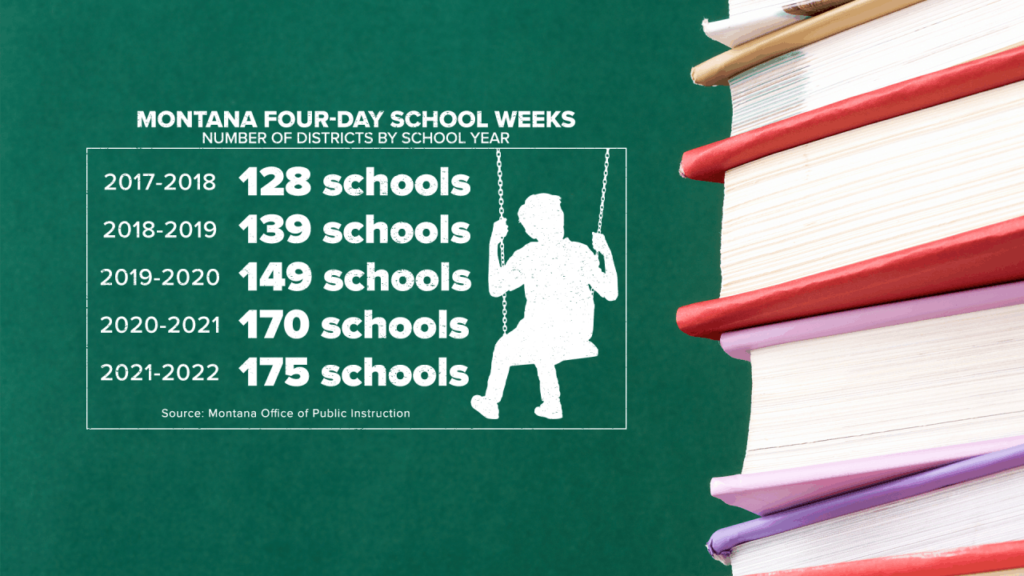How Many Weeks in a School Year: When it comes to the educational landscape, one fundamental aspect that affects both students and educators is the structure of the school year.
Introduction
How Many Weeks in a School Year: The concept of a school year is central to the academic calendar, which dictates the rhythm of teaching, learning, and assessment throughout the year. The structure of the school year impacts not just when students go to school, but also how they learn, how their progress is assessed, and how they balance their academic and personal lives. Understanding the number of weeks in a school year is essential for educators planning curricula, students organizing their study schedules, and parents managing family activities. Also Visit
How Many Weeks in a School Year: As educational systems around the world vary, the length of a school year can differ significantly. This article will provide a detailed exploration of how many weeks are in a typical school year, the factors that can alter this length, and the implications of these variations.

Table of Contents
- How Many Weeks in a School Year:
- FAQs:
The Standard Length of a School Year
How Many Weeks in a School Year: In many regions, especially in the United States, the school year is structured around a set number of weeks that typically spans about 36 weeks. This length is based on a traditional academic calendar and can be broken down into different systems depending on the educational institution.

Variations in School Year Length
How Many Weeks in a School Year: While the standard school year length is often cited as approximately 36 weeks, this duration can vary significantly depending on several factors. These include regional regulations, different educational systems, and unique school policies. Understanding these variations is essential for educators, students, and parents alike, as they impact everything from curriculum planning to holiday scheduling.
State and Local Regulations
How Many Weeks in a School Year: In the United States, educational standards and regulations vary from state to state, affecting the length of the school year. Each state sets its own requirements for the minimum number of instructional days or hours, which typically translates into a certain number of weeks.
- Minimum Instructional Days: Many states mandate a minimum number of instructional days for public schools. For instance:
- California: The state requires public schools to provide a minimum of 180 instructional days. With a typical school week consisting of five days, this translates to approximately 36 weeks of instruction.
- Texas: Texas also mandates a minimum of 180 school days per year. Schools in Texas usually start in late August and end in late May, aligning closely with the 36-week benchmark.
- Florida: Similar to California and Texas, Florida requires 180 instructional days, leading to a standard school year length of around 36 weeks.
- Variations by District: Within each state, local school districts may have some flexibility in scheduling. For example, some districts might implement additional days or shorter breaks based on local needs or budget constraints. The Education Commission of the States (ECS) provides detailed information on these regulations and can help illustrate the differences between districts.
- Extended School Years: In certain cases, districts may adopt an extended school year to provide additional instructional time or remedial support. These extended years can vary significantly, sometimes stretching to 200 days or more, depending on the district’s goals and resources.How Many Weeks in a School Year

International Differences
How Many Weeks in a School Year: The length of the school year varies widely across the globe, influenced by different educational philosophies, cultural practices, and climatic conditions. Understanding these international differences can provide a broader perspective on how school years are structured worldwide.
- United Kingdom: In the UK, the school year generally spans about 39 weeks. It is divided into three terms:
- Autumn Term: Starts in early September and ends in mid-December.
- Spring Term: Begins in early January and concludes in mid-March.
- Summer Term: Starts in late April and ends in mid-July.
Each term is separated by breaks, including a long summer vacation. For more details on the UK school calendar, you can visit the UK Government’s Education website.
- Australia: The Australian school year is approximately 40 weeks long, typically starting in late January or early February and ending in December. The year is divided into four terms, with breaks between each term:
- Term 1: Late January to early April.
- Term 2: Late April to early July.
- Term 3: Late July to late September.
- Term 4: Early October to mid-December.
For more information on the Australian school calendar, refer to the Australian Government’s Department of Education.
- Japan: The Japanese school year is around 40 weeks long and runs from April to March. It is divided into three terms:
- Term 1: April to July.
- Term 2: September to December.
- Term 3: January to March.
Japanese schools have long summer breaks and shorter winter and spring vacations. Detailed information about the Japanese school year can be found on the Japan Ministry of Education’s website.
- China: In China, the school year typically spans about 40 weeks, beginning in early September and concluding in early July. The academic year is divided into two main semesters, with breaks for winter and summer vacations. The Chinese Ministry of Education provides further insights into the school calendar and regulations.
Year-Round and Extended School Years
How Many Weeks in a School Year: In contrast to traditional academic calendars, some schools and educational systems use year-round or extended school years. These approaches can offer various benefits, such as reducing summer learning loss and providing continuous learning opportunities.
- Year-Round Education: Year-round education typically involves spreading the school year across the entire calendar year with shorter, more frequent breaks. This model is designed to maintain academic momentum and reduce the long summer break, which can lead to learning loss. Year-round schools often operate on a balanced calendar:
- Concept: The school year is divided into multiple shorter terms or sessions, with breaks occurring throughout the year. For example, a common model is the 45-15 plan, where students attend school for 45 days and then take a 15-day break.
- Benefits: Year-round education can help prevent the “summer slide,” improve retention of academic content, and offer more frequent opportunities for remediation and enrichment. The National Association for Year-Round Education (NAYRE) provides additional information and resources on this educational model.
- Extended School Year (ESY): Extended School Year programs are designed to provide additional instructional time beyond the standard school year, particularly for students who require extra support. These programs are often implemented for students with disabilities or those who need additional help to achieve academic goals.
- Purpose: ESY programs aim to prevent regression during long breaks and provide targeted support to ensure students make consistent progress. The length and structure of ESY programs can vary based on individual needs and educational goals.
- Implementation: Extended school years can vary in length, ranging from a few extra weeks to several months, depending on the program’s focus and the needs of the students. For more information on ESY programs, you can visit resources such as the U.S. Department of Education’s Office of Special Education Programs.
Factors Influencing the Length of a School Year
How Many Weeks in a School Year: Several factors can influence the length of a school year, making it important to understand the broader context in which school schedules are developed.
- Educational Goals and Standards: The length of the school year often aligns with educational goals and standards. Longer school years may be implemented to provide more comprehensive instruction, cover additional material, or offer remedial support. For example, schools with extended years might integrate extra instructional time for subjects like math or reading, aiming to boost student achievement and address learning gaps.
- Climate and Seasonal Factors: In some regions, school schedules are adjusted based on climate and seasonal conditions. For instance, schools in areas prone to extreme weather may have flexible schedules to accommodate unexpected closures or disruptions. In contrast, schools in temperate climates may follow a more traditional academic calendar with set breaks and vacations.
- Budget and Resources: Budget constraints and resource availability can impact the length of the school year. Schools facing financial limitations may have to shorten the academic year or implement alternative scheduling models to optimize their resources. Conversely, well-funded schools might offer extended programs or additional instructional days to enhance educational opportunities.
- Student and Teacher Well-being: The well-being of students and teachers is another critical factor influencing school year length. Extended school years or year-round schedules can help reduce burnout and provide a more balanced academic experience. For instance, shorter, more frequent breaks in year-round education can help prevent fatigue and support mental health. Conversely, long summer breaks in traditional schedules can offer a chance for rest and recovery.
- Parent and Community Preferences: In some cases, school year length and scheduling may be influenced by the preferences of parents and the community. Schools may seek input from stakeholders to determine the most effective calendar structure, balancing educational needs with family and community expectations.
Implications of School Year Length
How Many Weeks in a School Year: The length of the school year has several important implications for various stakeholders, including students, educators, and parents. Understanding these implications can help in making informed decisions about academic planning and scheduling.
Learning Outcomes: How Many Weeks in a School Year: The length of the school year can influence learning outcomes and student achievement. Extended instructional time or year-round education models may lead to improved academic performance and reduced learning loss. Conversely, shorter school years or frequent breaks may impact student continuity and retention of knowledge
Curriculum Planning: How Many Weeks in a School Year: Educators need to plan their curricula based on the number of weeks available in the school year. This involves pacing lessons, scheduling assessments, and ensuring that all required material is covered. Different school year lengths can impact how effectively teachers deliver the curriculum and support student learning.
Holiday and Break Scheduling: How Many Weeks in a School Year: The length of the school year affects when students and families can take vacations and enjoy holidays. Schools typically schedule breaks around major holidays such as Thanksgiving, winter break, and summer vacation. Understanding the school year structure helps families plan their activities and manage work-life balance.
Student Assessment: How Many Weeks in a School Year: The timing and frequency of assessments are influenced by the school year length. In systems with shorter terms, assessments may be more frequent, while longer terms may allow for more comprehensive evaluations. This can impact how students are assessed and how their progress is tracked throughout the year.
Educational Equity:How Many Weeks in a School Year: Variations in the length of the school year can affect educational equity. Schools with different schedules or instructional time may offer differing levels of support and learning opportunities. Addressing these disparities is essential for ensuring that all students have equal access to quality education.
Conclusion
How Many Weeks in a School Year:
How Many Weeks in a School Year:The number of weeks in a school year is a fundamental aspect of the educational system that affects various elements of academic planning and student life. While a typical school year may span around 36 weeks in many regions, there are significant variations based on state regulations, international standards, and specific school policies. Understanding these differences and their implications is crucial for effective educational planning and supporting student success.
How Many Weeks in a School Year: For additional insights and detailed information on school year structures and regulations, you can explore resources such as the National Center for Education Statistics, Education Week, and the Education Commission of the States (ECS). These sources provide valuable data and analysis on educational practices and policies across different regions. For More Info
How Many Weeks in a School Year: By being informed about the length of the school year and the factors that influence it, educators, students, and parents can better navigate the academic calendar and make decisions that support a productive and balanced educational experience.
FAQs:
Q1: How many weeks are there in a standard school year in the United States?
How Many Weeks in a School Year: In the United States, a standard school year typically spans about 36 weeks. This is based on the requirement for approximately 180 instructional days, assuming a standard five-day school week. Variations can occur based on state regulations, district policies, and individual school schedules.
Q2: Why does the length of the school year vary between states?
How Many Weeks in a School Year: The length of the school year varies between states due to differences in state regulations and educational standards. Each state sets its own minimum requirements for instructional days or hours, which can lead to variations in the total number of weeks in the school year. Local districts may also have some flexibility in scheduling based on their specific needs and resources.
Q3: What are the different academic calendar systems used in schools?
How Many Weeks in a School Year: Schools typically use one of the following academic calendar systems:
Semester System: Divides the school year into two main semesters, each lasting about 18 weeks.
Trimester System: Divides the year into three terms, each lasting approximately 12 weeks.
Quarter System: Divides the year into four quarters, each lasting about 9 weeks.
Year-Round Education: Spreads the academic year across the entire calendar year with shorter, more frequent breaks.


Thanks for finally talking about > How Many Weeks In A School Year – Naqi Edu
< Liked it!